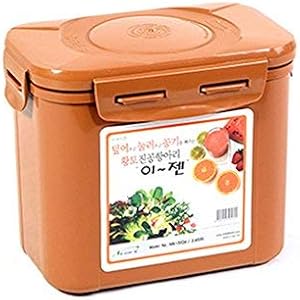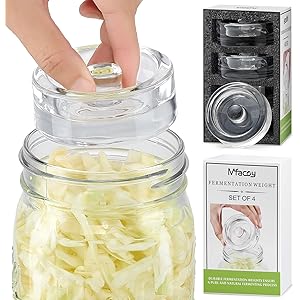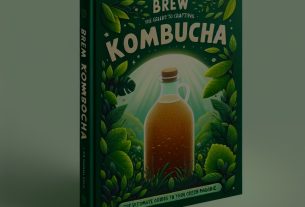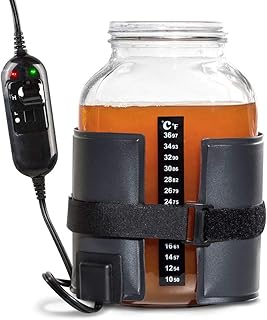Kombucha Second Fermentation and Alcohol Content: Understanding Fermentation Levels and Health Implications
Kombucha, the effervescent and tangy drink made from fermented tea, has gained immense popularity in recent years due to its potential health benefits and unique flavors. While many people enjoy kombucha for its refreshing taste, they may not fully understand the intricacies of the fermentation process, especially the second fermentation and its relationship to alcohol content. In this comprehensive article, we will delve into the second fermentation of kombucha, exploring how it influences alcohol levels, the factors that affect these levels, and what consumers should know about the alcohol content in their favorite probiotic beverage.
What is Kombucha?
Kombucha is a fermented beverage made from sweetened tea and a SCOBY (Symbiotic Culture of Bacteria and Yeast). The brewing process consists of two main stages:
- First Fermentation: During the first fermentation, the sweetened tea is combined with the SCOBY and allowed to ferment for 7 to 14 days. This is when the yeast and bacteria convert sugars into alcohol, acids, and carbon dioxide, resulting in a tangy, fizzy drink.
- Second Fermentation: The second fermentation occurs after the first fermentation. The kombucha is bottled with added flavors (like fruits, herbs, and spices) and allowed to ferment for an additional 3 to 7 days. This stage enhances the flavor and carbonation of the drink.
Understanding Alcohol in Kombucha
Alcohol is a natural byproduct of fermentation. In kombucha, yeast breaks down sugars, producing alcohol and carbon dioxide in the process. The amount of alcohol present in kombucha depends on several factors, including:
- Fermentation Time: Longer fermentation times can lead to higher alcohol content as more sugars are converted into alcohol.
- Sugar Content: The initial amount of sugar in the sweetened tea affects the potential alcohol levels. More sugar can result in a higher alcohol content after fermentation.
- Yeast Strain: Different strains of yeast produce varying amounts of alcohol. Some yeast strains are more efficient at converting sugars to alcohol than others.
Alcohol Levels in Kombucha
Generally, kombucha is classified as a non-alcoholic beverage, containing less than 0.5% alcohol by volume (ABV). However, during second fermentation, alcohol levels can increase. Homemade kombucha can vary significantly in alcohol content, often exceeding the legal limit for non-alcoholic beverages. Commercially produced kombucha is typically brewed to maintain low alcohol levels, while some specialty brands may offer higher-alcohol options.
Factors Influencing Alcohol Content During Second Fermentation
- Duration of Second Fermentation: If kombucha undergoes second fermentation for an extended period, the alcohol content can rise significantly. While 3 to 7 days is standard for second fermentation, extending this duration may lead to increased alcohol levels.
- Added Ingredients: Adding sugar-rich fruits or syrups during second fermentation provides additional fermentable sugars, which can elevate alcohol production. Ingredients like ripe bananas, mangoes, or concentrated fruit juices can increase the sugar content and subsequently lead to higher alcohol levels.
- Temperature: The fermentation temperature can also affect alcohol production. Warmer temperatures generally speed up fermentation, resulting in quicker conversion of sugars to alcohol. If you are fermenting at higher temperatures (above 75°F or 24°C), be mindful that the alcohol content may rise more rapidly.
- Bottle Sealing: When sealing bottles for second fermentation, it’s crucial to ensure they are airtight. Any leaks can allow carbon dioxide to escape, which may lead to an imbalance in the fermentation process and influence alcohol production.
Legal Definitions and Regulations
Understanding the legal implications of alcohol in kombucha is essential, especially for those who brew at home or purchase commercially produced brands. In the United States, the Alcohol and Tobacco Tax and Trade Bureau (TTB) defines alcoholic beverages as those containing 0.5% ABV or higher. Here’s how it affects kombucha:
Homebrewing
For home brewers, the alcohol content in kombucha can vary widely. It’s advisable to monitor fermentation closely and be aware of the potential for elevated alcohol levels. Home brewers should be cautious about the ingredients they use, the fermentation time, and the environment to maintain alcohol levels below the legal limit for non-alcoholic beverages.
Commercial Production
Commercial kombucha producers often take measures to control alcohol levels to comply with regulations. This may involve:
- Monitoring Fermentation: Producers frequently test the alcohol content during fermentation and may stop the process early to keep levels low.
- Pasteurization: Some brands choose to pasteurize their kombucha after fermentation to kill off yeast and bacteria, stabilizing the product and ensuring lower alcohol content.
- Alcohol-Free Labels: Many commercial brands explicitly label their products as “alcohol-free” to indicate compliance with regulatory standards.
Health Implications of Alcohol in Kombucha
For many, the health benefits of kombucha are a primary motivation for consumption. However, the presence of alcohol raises several considerations:
- Alcohol Sensitivity: Individuals who are sensitive to alcohol or avoiding it for health reasons should be cautious when consuming kombucha. Homemade or specialty kombucha may contain higher levels of alcohol than expected.
- Pregnancy and Nursing: Pregnant women or nursing mothers should consult their healthcare provider before consuming kombucha, especially if it is homemade or from an unclear source regarding its alcohol content.
- Interaction with Medications: Kombucha’s alcohol content may interact with certain medications, particularly those that require strict avoidance of alcohol. It’s crucial for individuals on medications to seek medical advice before incorporating kombucha into their diet.
- Moderation is Key: As with any beverage containing alcohol, moderation is essential. While the alcohol levels in commercially produced kombucha are generally low, excessive consumption can still lead to intoxication or adverse effects, especially if consumed in large quantities.
How to Minimize Alcohol Content in Kombucha
If you enjoy brewing your own kombucha but want to keep the alcohol content low, consider the following strategies:
- Shorten Fermentation Time: Limit both the first and second fermentation times. The shorter the fermentation, the less time yeast has to convert sugars to alcohol.
- Use Less Sugar: Reduce the sugar content in your initial tea mixture. Less sugar means less available fermentable material for the yeast, resulting in lower alcohol levels.
- Control Temperature: Keep fermentation temperatures on the cooler side. Lower temperatures can slow down yeast activity, reducing alcohol production.
- Choose Your Ingredients Wisely: Avoid adding high-sugar fruits or syrups during second fermentation. Instead, consider using herbs or spices, which impart flavor without significantly increasing sugar content.
Kombucha’s second fermentation is a fascinating process that significantly influences the beverage’s flavor, carbonation, and alcohol content. While the majority of commercially produced kombucha contains minimal alcohol, homebrewers need to be aware of the factors affecting alcohol levels during fermentation. Understanding how ingredients, fermentation time, and temperature impact alcohol production is crucial for anyone looking to enjoy kombucha responsibly.
As the popularity of kombucha continues to grow, so does the need for awareness regarding its alcohol content. Whether you brew at home or purchase from a store, knowledge is power. By being informed, you can enjoy your kombucha experience while making mindful choices about your health and well-being.
MFacoy 4-Pack of Fermentation Glass Weights with Easy Grip Handle for Great Wide Mouth Canning Mason Jars, Pickling Sourkrout Kraut Glass Weight Fermentation Kit with Easy Grip Handle, Dishwasher Safe
$12.99 (as of 02/10/2025 15:41 GMT -03:00 - More infoProduct prices and availability are accurate as of the date/time indicated and are subject to change. Any price and availability information displayed on [relevant Amazon Site(s), as applicable] at the time of purchase will apply to the purchase of this product.)
Receive tips, news and exclusive offers! Sign up for our newsletter now!








